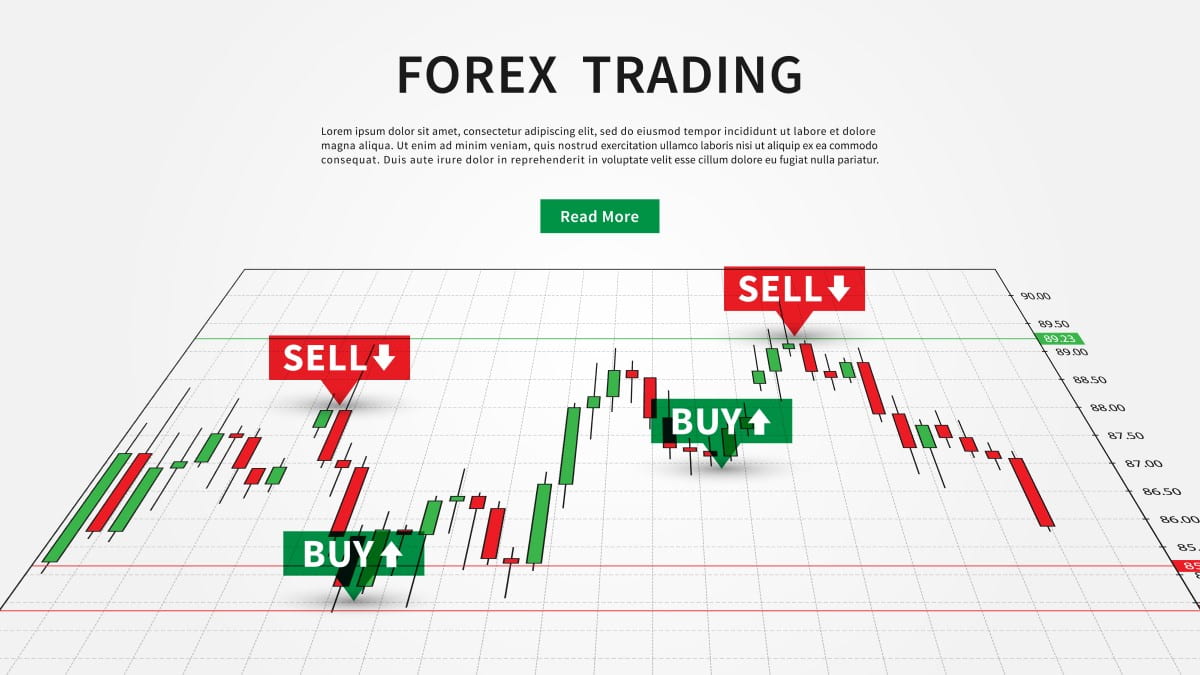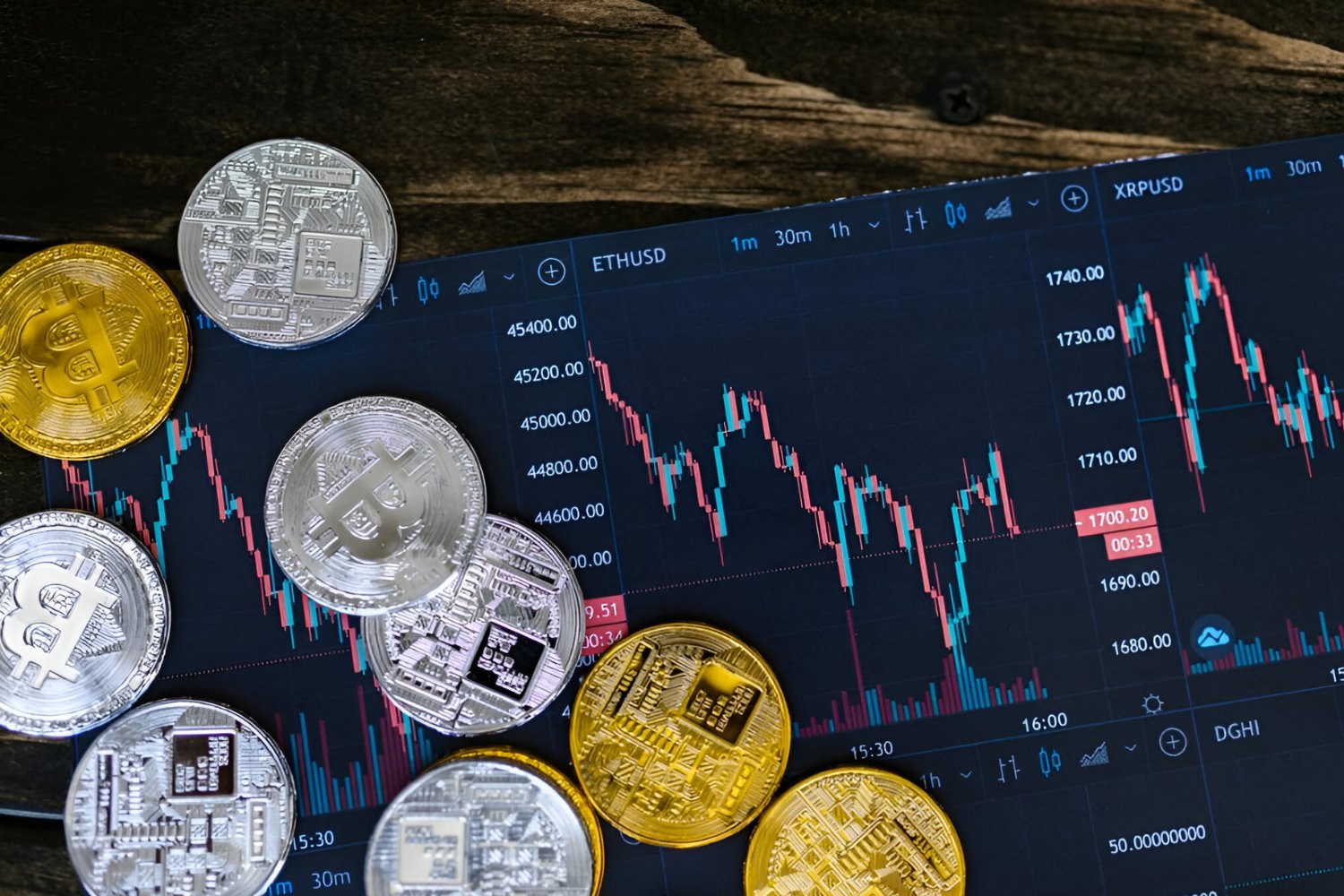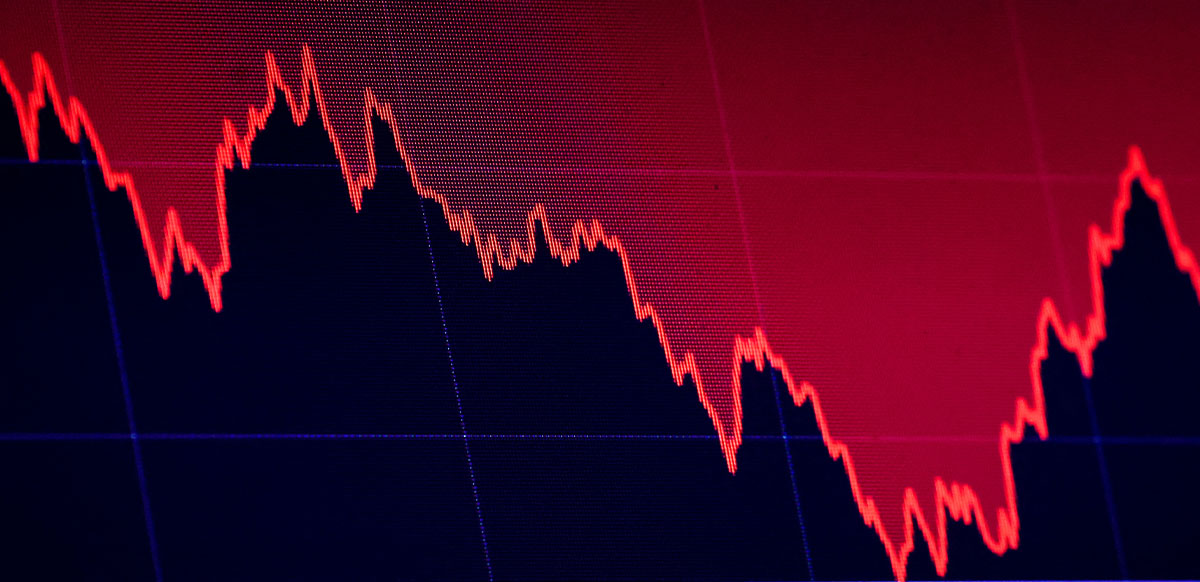Introduction
Welcome to the world of trading! Whether you’re a seasoned trader or just starting out, it’s important to have a solid understanding of various financial instruments and strategies. One such instrument that traders often come across is a swap.
A swap is a financial derivative that allows two parties to exchange cash flows or liabilities for a specified period of time. It is commonly used to manage risks and speculate on interest rate fluctuations, currency exchange rates, or commodity prices.
Swaps have become increasingly popular in the financial markets due to their flexibility and ability to customize terms to meet the specific needs of the parties involved. By entering into a swap agreement, traders can access new markets, hedge against potential losses, or simply optimize their investment portfolios.
In this article, we will delve into the world of swaps, exploring their definition, how they work, the different types of swaps available, as well as the advantages and risks associated with using them.
Whether you’re a curious trader looking to expand your knowledge or an investor considering incorporating swaps into your trading strategy, this comprehensive guide will provide you with the information you need to navigate the fascinating world of swap trading.
Definition of Swap in Trading
In the world of trading, a swap is a financial contract or agreement between two parties to exchange cash flows or liabilities for a predetermined period of time. Swaps are commonly used to manage risks, speculate on market movements, and optimize investment portfolios.
The basic concept of a swap involves the exchange of one type of cash flow or liability for another. These cash flows can be in the form of interest payments, currency exchange rates, commodity prices, or even equity returns.
A swap typically involves two parties, known as the “counterparties,” who agree to enter into the contract. Each counterparty will have their own set of obligations and rights outlined in the swap agreement.
One key aspect of swaps is that they are designed to help both parties achieve their respective financial objectives. For example, a company may enter into an interest rate swap to convert its variable rate debt into a fixed rate, thereby minimizing the risk of rising interest rates. On the other hand, a financial institution may enter into a currency swap to hedge against foreign exchange rate fluctuations.
Swaps are traded over-the-counter (OTC), meaning that they are negotiated and tailored to meet the specific needs of the counterparties. Unlike standardized financial instruments such as futures or options, swaps allow for a high degree of customization in terms of the cash flows, duration, settlement dates, and other parameters.
It is important to note that swaps do not involve the direct exchange of principal amounts between the parties. Instead, they focus on exchanging the cash flows associated with the underlying assets or liabilities. This avoids the need for the parties to actually possess the underlying assets, making swaps highly liquid and accessible to a wide range of market participants.
Overall, swaps play a vital role in the financial markets by providing a means for traders and investors to manage risks, optimize their investment portfolios, and speculate on market movements. By understanding the definition and mechanics of swaps, traders can effectively incorporate them into their trading strategies and take advantage of the numerous opportunities they present.
How Swap Works
Now that we’ve covered the definition of a swap, let’s delve into how swaps actually work. Understanding the mechanics of swaps is crucial in order to grasp their functionality and potential benefits in trading.
At its core, a swap involves two counterparties who agree to exchange cash flows or liabilities based on a predetermined set of conditions. These conditions include the type of cash flow being exchanged, the duration of the swap, and the terms of settlement.
Let’s take a look at a simple example to illustrate how a swap works. Imagine two parties, Party A and Party B. Party A has a fixed-rate loan while Party B has a variable-rate loan. Party A wants to switch to a variable rate, while Party B prefers a fixed rate.
In this scenario, Party A and Party B can enter into an interest rate swap. Party A agrees to pay Party B a fixed interest rate on a notional amount, while Party B agrees to pay Party A a variable interest rate on the same notional amount.
Throughout the life of the swap, Party A will make fixed interest rate payments to Party B, while Party B will make variable interest rate payments to Party A. The notional amount is not actually exchanged, but is used as a reference for calculating the cash flows.
The key aspect of a swap is that it allows each party to effectively convert their loan from one type of interest rate to another, without having to enter into a new loan agreement. This enables them to manage their interest rate risk and potentially benefit from more favorable rates.
In addition to interest rate swaps, swaps can take various other forms, such as currency swaps and commodity swaps. Currency swaps involve the exchange of cash flows denominated in different currencies, while commodity swaps involve the exchange of cash flows based on the price of a specified commodity.
It’s important to note that swaps are typically traded over-the-counter (OTC), which means they are not standardized or traded on an exchange. This allows for greater flexibility in terms of customization, but also requires careful negotiation and documentation between the counterparties.
Overall, swaps provide a mechanism for traders and investors to manage risks, optimize their investment portfolios, and speculate on market movements. By understanding how swaps work and the different types available, market participants can make informed decisions and leverage the benefits that swaps offer.
Types of Swaps
Swaps come in various forms, each designed to address specific financial needs and objectives. Understanding the different types of swaps is essential for traders and investors looking to utilize them effectively. Let’s explore the most common types of swaps:
- Interest Rate Swaps: Interest rate swaps are the most widely used type of swap. In an interest rate swap, two parties exchange cash flows based on different interest rates. These can be fixed-to-floating rate swaps, where one party pays a fixed interest rate while the other pays a floating rate based on a benchmark such as LIBOR.
- Currency Swaps: Currency swaps involve the exchange of cash flows denominated in different currencies. In a currency swap, two parties agree to exchange interest payments and principal amounts in different currencies. This allows participants to hedge against currency risk and access foreign markets.
- Commodity Swaps: Commodity swaps involve the exchange of cash flows based on the price of a specified commodity. They are commonly used by producers, consumers, and traders to manage price risks. For example, an airline may enter into a jet fuel swap to hedge against rising fuel prices.
- Equity Swaps: Equity swaps involve the exchange of cash flows based on the performance of a specific stock or equity index. They enable investors to gain exposure to a particular stock or index without actually owning the underlying assets. Equity swaps are often used for hedging or speculation purposes.
- Credit Default Swaps: Credit default swaps (CDS) are a type of swap that allow investors to protect against the default risk of a bond or other credit instrument. In a CDS, one party makes periodic payments to another party in exchange for protection against credit events, such as bond defaults.
These are just a few examples of the types of swaps available in the market. It’s important to note that each type of swap has its own unique characteristics, risks, and potential benefits. Traders and investors should carefully consider their objectives and risk tolerance when choosing which types of swaps to incorporate into their trading strategies.
By understanding the different types of swaps and their applications, market participants can better navigate the complex world of swaps and utilize them to their advantage. Whether it’s managing interest rate risks, hedging against currency fluctuations, or mitigating credit default risks, swaps offer a versatile toolset for traders and investors to optimize their portfolios and achieve their financial goals.
Interest Rate Swaps
Interest rate swaps are one of the most commonly used types of swaps in the financial markets. They provide a mechanism for two parties to exchange cash flows based on different interest rates. This allows participants to manage their exposure to interest rate fluctuations and optimize their borrowing or investment costs.
In an interest rate swap, two counterparties agree to exchange cash flows over a specified period of time. There are two main types of interest rate swaps:
- Fixed-to-Floating Rate Swaps: In this type of swap, one party agrees to pay a fixed interest rate, while the other party pays a floating interest rate based on a reference rate such as LIBOR (London Interbank Offered Rate). These swaps are commonly used to convert variable-rate debt into fixed-rate debt, or vice versa, providing flexibility and risk management for both parties.
- Fixed-to-Fixed Rate Swaps: In this type of swap, both parties agree to pay fixed interest rates, but at different levels. This allows participants to adjust their interest rate exposure without shifting between fixed and floating rates. Fixed-to-fixed rate swaps can be used to hedge against interest rate risks or to take advantage of different yield curves in the market.
Interest rate swaps offer several potential benefits for market participants. One key advantage is the ability to manage and mitigate interest rate risk. For instance, a company with variable-rate debt may enter into a fixed-to-floating rate swap to protect itself against a potential increase in interest rates. On the other hand, a financial institution may use interest rate swaps to profit from their expertise in forecasting interest rate movements.
In addition, interest rate swaps can be used to optimize borrowing or investment costs. For example, a company may have access to lower fixed interest rates compared to floating rates, and can use an interest rate swap to convert its existing floating-rate debt into fixed-rate debt. This strategy can provide stability in interest payments and potentially lower borrowing costs.
It’s important to note that interest rate swaps are subject to certain risks. Market participants should carefully consider the creditworthiness of the counterparty, as well as the potential for interest rate and liquidity risks. Additionally, changes in market conditions, such as shifts in monetary policies or economic indicators, can impact the value and cash flows associated with interest rate swaps.
Overall, interest rate swaps offer a flexible and widely used tool for managing interest rate risks and optimizing borrowing or investment costs. Traders and investors can employ interest rate swaps to protect against interest rate fluctuations, mitigate risks, enhance portfolio performance, and achieve their financial objectives.
Currency Swaps
Currency swaps are a type of swap where two parties agree to exchange cash flows denominated in different currencies. They are commonly used by market participants to hedge against currency risks, access foreign markets, or speculate on exchange rate movements.
In a currency swap, the two counterparties agree to exchange both principal amounts and periodic interest payments in different currencies. The exchange of cash flows typically occurs at the inception of the swap and at predetermined intervals throughout the life of the agreement.
Currency swaps provide several benefits for market participants. One key advantage is the ability to hedge against currency risk. For businesses engaged in international transactions, currency fluctuations can lead to increased costs or reduced profitability. By entering into a currency swap, companies can effectively manage their exposure to foreign exchange rate movements and stabilize cash flows.
Furthermore, currency swaps allow participants to access foreign markets more efficiently. For example, a company seeking to expand its operations into a foreign country may need to borrow funds in the local currency. Instead of directly borrowing in the foreign currency, which may be costly or involve regulatory constraints, the company can enter into a currency swap to convert its domestic currency borrowing into the desired foreign currency.
Another use of currency swaps is speculation on exchange rate movements. Traders can take positions in currency swaps to profit from anticipated changes in exchange rates. For instance, if a trader expects the value of one currency to appreciate against another, they may enter into a currency swap to benefit from the potential gains resulting from the exchange rate movement.
It’s important to note that currency swaps come with certain risks. Exchange rate fluctuations can impact the value of the swap and the cash flows associated with it. Additionally, counterparties need to carefully assess the creditworthiness of the other party to mitigate counterparty risk.
Overall, currency swaps offer a versatile tool for market participants to manage currency risks, access foreign markets, and speculate on exchange rate movements. By understanding the mechanics of currency swaps and the potential benefits they offer, traders and investors can effectively incorporate them into their strategies and navigate the complexities of the global currency markets.
Commodity Swaps
Commodity swaps are a type of financial contract that allows market participants to exchange cash flows based on the price of a specified commodity. These swaps provide a way to manage price risks associated with commodities and are commonly used by producers, consumers, and traders in various industries.
In a commodity swap, two parties agree to exchange cash flows over a specific period of time. The cash flows are typically linked to the price of a particular commodity, such as oil, natural gas, gold, or agricultural products. The exchange of cash flows can be based on the spot price of the commodity or on a predetermined price index.
Commodity swaps offer several benefits for market participants. One key advantage is the ability to hedge against price risks. For example, a company that relies on a specific commodity for its production may enter into a commodity swap to protect itself from potential price increases. By locking in a fixed price through the swap, the company can manage its input costs and ensure stable profit margins.
Furthermore, commodity swaps allow participants to gain exposure to commodity markets without physically owning the underlying assets. This enables traders and investors to take positions on commodity prices and benefit from potential price movements, without the logistical challenges and costs associated with buying and storing physical commodities.
Another use of commodity swaps is to facilitate financing for producers or consumers of commodities. For instance, a producer may enter into a commodity swap to secure financing by pledging future production as collateral. Similarly, a consumer may enter into a swap agreement to ensure a stable supply of a specific commodity at a predetermined price.
It’s important to note that commodity swaps are subject to certain risks. The most significant risk is the volatility of commodity prices, which can impact the value of the swap and the cash flows associated with it. Additionally, counterparty risk should also be carefully assessed, as the financial health and reliability of the other party can affect the overall performance of the swap.
Overall, commodity swaps provide a valuable tool for managing price risks, gaining exposure to commodity markets, and facilitating financing in the commodities sector. By understanding the mechanics of commodity swaps and the potential benefits they offer, market participants can effectively utilize these swaps to optimize their risk management strategies and take advantage of opportunities in the commodities market.
Equity Swaps
Equity swaps are a type of financial derivative where two parties agree to exchange the cash flows based on the performance of a specific stock or equity index. These swaps provide a mechanism for market participants to gain exposure to equity markets without physically owning the underlying stocks or indices.
In an equity swap, the two counterparties agree to exchange cash flows over a specific period of time. The cash flows are typically linked to the returns of a particular stock or equity index. This means that one party receives the returns from the underlying equity, while the other party pays a fixed or floating rate of return.
Equity swaps offer several benefits for market participants. One advantage is the ability to gain exposure to a particular stock or equity index without the need to buy the actual shares. This allows investors to take positions in specific companies or sectors without the costs and logistical challenges associated with owning physical stocks.
Furthermore, equity swaps offer flexibility and customization in terms of the contract terms. For example, participants can tailor the swap to suit their specific needs, such as the duration of the swap, the reference equity or index, and the payment terms. This allows for greater flexibility in managing risk and optimizing investment strategies.
Equity swaps can be used for various purposes, including hedging, speculation, and portfolio management. For example, investors may use equity swaps to protect their portfolios against potential losses by entering into a swap that pays them the performance of a specific stock or index, effectively offsetting any potential declines in their holdings.
In addition, equity swaps can be utilized for speculative purposes, where traders aim to profit from anticipated changes in the returns of an equity or index. Traders may take long or short positions in equity swaps based on their market outlook and expectations of future performance.
It’s important to note that equity swaps are not without risks. Market participants should carefully consider the creditworthiness of the counterparty, as well as the potential for market and liquidity risks. Additionally, changes in market conditions, such as company-specific events or shifts in market sentiment, can impact the value and cash flows associated with equity swaps.
Overall, equity swaps provide a versatile tool for market participants to gain exposure to equity markets, manage risk, and optimize their investment portfolios. By understanding the mechanics of equity swaps and the potential benefits they offer, traders and investors can effectively incorporate these swaps into their strategies and tap into the opportunities presented by the equity markets.
Advantages of Using Swaps
Swaps offer several advantages for market participants, making them a valuable tool in managing risks and optimizing investment strategies. Let’s explore some of the key advantages of using swaps:
- Risk Management: Swaps provide a means to hedge against various types of risks, including interest rate risk, currency risk, commodity price risk, and equity price risk. By entering into a swap, market participants can offset potential losses or fluctuations in prices, ensuring more stable cash flows and protecting their portfolios against adverse market movements.
- Customization: Swaps allow for a high degree of customization. Unlike standardized financial instruments traded on exchanges, swaps are negotiated contracts tailored to meet the specific needs of the counterparties. This flexibility allows participants to design swaps that align with their unique risk preferences, investment objectives, and timing requirements.
- Access to New Markets: Swaps enable market participants to access markets that may otherwise be challenging or costly to enter. For example, currency swaps allow companies to access foreign markets without the need to directly engage in foreign currency borrowings. This opens up new opportunities for expansion and diversification.
- Flexible Terms: Swaps offer the flexibility to select terms that best suit the participants’ goals. This includes choosing the duration of the swap, the frequency of cash flows, and the reference rates or indices. Participants can structure swaps that align with their investment horizons and risk appetite, providing greater control over their trading and investment strategies.
- Cost Savings: Swaps can lead to cost savings for market participants. For instance, interest rate swaps can help companies optimize their borrowing costs by converting variable-rate debt into fixed-rate debt, potentially reducing interest expenses. Currency swaps can also enable participants to access foreign currencies at more favorable rates compared to traditional currency exchange methods.
It’s important to note that although swaps offer various advantages, they also come with associated risks. Market participants should carefully assess the creditworthiness of the counterparty, monitor market conditions, and consider the potential impact of regulatory changes. Proper risk management and due diligence are essential when utilizing swaps as part of a trading or investment strategy.
Overall, the advantages of using swaps, such as risk management, customization, access to new markets, flexible terms, and cost savings, make them an invaluable tool for traders, investors, and businesses. By leveraging swaps effectively, market participants can optimize their risk-return profile and seize opportunities in the ever-evolving financial markets.
Risks Associated with Swaps
While swaps offer numerous benefits, it’s crucial to also be aware of the risks involved. Market participants should carefully consider the following risks associated with swaps:
- Counterparty Risk: Swaps are typically executed in the over-the-counter (OTC) market, meaning they are not traded on an exchange. This introduces counterparty risk, which is the risk of the other party defaulting on its obligations. It’s important to assess the creditworthiness of the counterparty and establish appropriate risk management measures to mitigate this risk.
- Market Risk: Swaps are subject to market risk, which refers to the potential for adverse changes in market conditions. This can include interest rate movements, currency fluctuations, commodity price volatility, or changes in equity markets. Market risk can impact the value of the swap and the cash flows associated with it, resulting in potential losses for the participants.
- Liquidity Risk: Swaps traded in the OTC market may also expose participants to liquidity risk. This refers to the risk of not being able to exit or unwind a swap position at a desired price or within a desired timeframe. Illiquid markets or volatile market conditions can make it challenging to find counterparties willing to enter into or unwind swap agreements.
- Operational Risk: Swaps involve a complex set of operational processes and procedures. There is the potential for errors or delays in trade execution, settlement, and documentation, which can lead to financial losses or legal disputes. Implementing robust operational controls and procedures is essential in mitigating operational risk.
- Regulatory Risk: Swaps are subject to regulatory frameworks that can vary across jurisdictions. Changes in regulations, such as reporting requirements, capital adequacy rules, or restrictions on certain types of swaps, can introduce additional compliance costs and impact the profitability or viability of certain swap transactions.
It’s important for market participants to thoroughly understand and manage these risks when engaging in swap transactions. This involves conducting proper due diligence, regularly monitoring market and credit conditions, implementing risk management practices, and staying informed about regulatory developments.
By recognizing and addressing the risks associated with swaps, market participants can make more informed decisions, effectively manage their exposures, and protect their trading and investment portfolios.
Conclusion
Swaps are an integral component of the financial markets, offering traders, investors, and businesses a versatile toolset to manage risks, optimize investment strategies, and access new markets. Through swaps, individuals and organizations can exchange cash flows or liabilities based on various underlying assets, such as interest rates, currencies, commodities, and equities.
Throughout this guide, we have explored the different types of swaps, including interest rate swaps, currency swaps, commodity swaps, and equity swaps. Each type serves a specific purpose and provides distinct advantages to market participants, allowing them to hedge against risks, gain exposure to different assets, and achieve their financial objectives.
By understanding how swaps work and the potential benefits they offer, traders and investors can effectively incorporate them into their strategies and navigate the complexities of the financial markets. It’s important to carefully consider the risks associated with swaps, such as counterparty risk, market risk, liquidity risk, operational risk, and regulatory risk. Implementing proper risk management practices and conducting thorough due diligence can help participants mitigate these risks and protect their interests.
As with any financial instrument, a thoughtful and informed approach is critical when using swaps. Market participants should assess their risk tolerance, objectives, and financial circumstances before entering into swap agreements. Regular monitoring and evaluation of market conditions, as well as staying updated on regulatory developments, are vital in managing swaps effectively.
Overall, swaps play a significant role in the financial markets, allowing participants to efficiently manage risks, diversify portfolios, and achieve financial goals. By harnessing their power and understanding their intricacies, traders, investors, and businesses can harness the potential of swaps to navigate the dynamic landscape of today’s financial world.
























